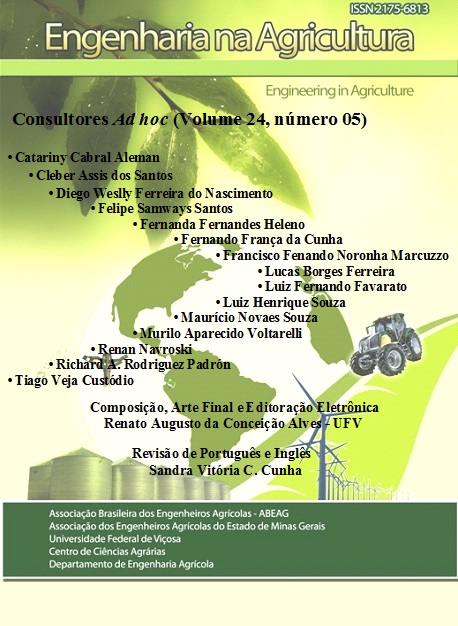SPATIALIZATION OF WATER QUALITY OF SURFACE HIGH JAGUARIBE BASIN, CEARÁ FOR PURPOSES OF IRRIGATION
DOI:
https://doi.org/10.13083/reveng.v24i5.696Keywords:
semiárido, salinidade, geoprocessamento, estatísticaAbstract
Evaluation of surface water quality and detection of possible degradations of fundamental importance for the monitoring of river basin management. Thereby the objective of this work was to evaluate the quality of surface water reservoirs in the basin of the Alto Jaguaribe, Ceará as the chemical parameter for irrigation purposes. The study was conducted in 10 reservoirs that are part of sub-basin of the Alto Jaguaribe. the data of chemical concentrations of the reservoir water were used in a period from 2001 to 2015 the following parameters: electrical conductivity (EC), chloride (Cl-), sodium (Na+), calcium (Ca2+) and magnesium (Mg2+), totaling 750 samples. The data came from the company’s database Water Management (COGERH) available to the Federal Institute of Education, Science and Technology of Ceará state, campus Iguatu. The statistical technique was applied Multivariate Hierarchical Cluster Analysis (HCA) for formation of the similarity between the reservoirs. According to results, the waters of the Alto Jaguaribe sub-basin reservoirs have so far, moderate risk to salinity in general, with the exception of shells of Inhamuns region, in which were found high concentrations of salts. The Broco and Favelas weirs obtained the highest concentrations of salts from the study, with the upper limit for human consumption and irrigation, fact occurred by the low capacity of the reservoirs, high evaporation and low rainfall, resulting in increased concentration of body salts water.Downloads
Downloads
Published
How to Cite
Issue
Section
License
Authors who publish with this journal agree to the following terms:
The author(s) authorize(s) the publication of the text in the journal;
The author(s) ensure(s) that the contribution is original and unpublished and that it is not in the process of evaluation by another journal;
The journal is not responsible for the views, ideas and concepts presented in articles, and these are the sole responsibility of the author(s);
The publishers reserve the right to make textual adjustments and adapt texts to meet with publication standards.
From submission, the author is fully conceding the paper's patrimonial rights to the publication, but retaining the owner of its moral rights (authorship and paper's identification) according to Creative Commons Attribution-Noncommercial.








 Licensed by
Licensed by 